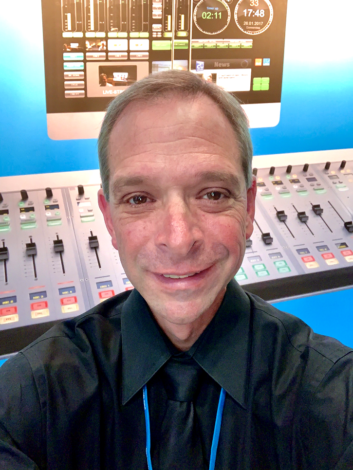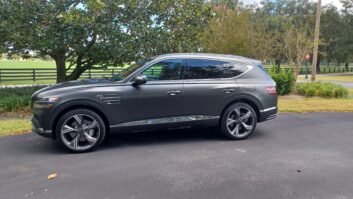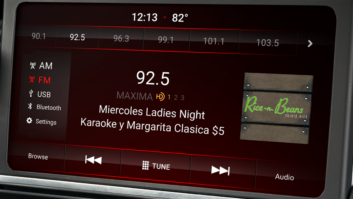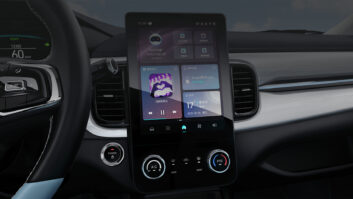
In a series of articles, we’ve been exploring the question: “What should radio console buyers know about developments in this product class?”
Clark Novak is radio marketing specialist for Lawo Inc. An earlier version of this interview appeared in the RW ebook “Trends in Consoles.”
Radio World: What role does the console play today in planning a studio?
Clark Novak: Choosing a console is still one of the first big steps in planning any studio build, but “console” may not mean the same thing today that it used to. Broadcasters are very interested in virtualization, and that includes virtualizing the mixer. Many forward-looking groups are looking at virtual mixing surfaces with context-sensitive, touchscreen GUIs as a way to streamline workflows and customize the controls given to operators. Others like traditional, physical consoles for their familiarity and tactile controls. Lawo offers both, but whichever you prefer, consoles are still the centerpiece of the radio studio.
RW: What are other important console design trends, and what are users asking for now?
Novak: It’s hard to pin down just one idea, but broadcasters continually ask us for two things: centralized control of broadcast peripherals, and interoperability.
The need for better control comes from today’s busy operations where talent is being asked to produce more content, more efficiently. Operators need to be able to perform complex tasks, and they need tools that make their workflows simpler, while keeping control surfaces purposeful and uncluttered.
[Read “How to Choose Your Next Radio Console”]
And interoperability is key, not only for control of in-studio devices, but for interchange of program content between the radio and TV sides of the plant. The days of separate systems are gone; programming must be able to be transferred on-demand, seamlessly and easily, without worrying about format barriers.
Fifteen years ago, manufacturers had proprietary protocols that didn’t talk to other companies’ systems, and AoIP was so new and novel that broadcasters didn’t much mind. But today, radio engineers are increasingly demanding that new IP systems be able to play well with others. AoIP gives tremendous advantages in system design, operational flexibility and easy expansion on demand; but what good is all that if your Brand X system can’t talk to a device that only speaks Brand Y’s protocol?
Our customers tell us that AoIP systems mustn’t be closed. This is why Lawo has worked so tirelessly over the years to promote interoperability and open standards like AES67 and ST2110-30, and includes them in all of our products.
RW: What should engineers who haven’t bought a console in a while know?
Novak: One thing that’s important to keep in mind is that modern boards are actually control surfaces. Where older digital consoles performed switching, routing, mixing and audio shaping within the actual console frame, today’s mixers offload these functions to a powerful mix engine. This permits you to tailor engines with DSP features and an I/O count customized to your application. You might choose a very powerful engine for the on-air suite and a more modest one for production or a newsroom, but the same control surface — or virtual mixing software works with both — so your operators have a familiar layout wherever they work, and you control costs by choosing engines that deliver features tailored to your operations.
RW: How have AoIP developments been reflected in the look and function of surfaces?
Novak: AoIP has made it possible for nearly every studio system to include some level of multi-point audio routing. Think back a few years and you’ll remember that routing was something only the largest, wealthiest facilities could afford. Same goes for mix-minus, which used to be a complex thing provided for just one or two contributors. AoIP has turned every console into a routing controller and made it possible to automatically generate mix-minus for every local and remote guest, simultaneously. These are just a couple of examples of how AoIP has brought very advanced capabilities to operations where they were previously out of reach.
RW: What does the next generation of user interfaces look like?
Novak: Tablets and smartphones have reshaped the way we interact with technology. Board ops, especially those newest to radio, are used to tapping, swiping and touching screens, so console designs with touchscreen GUIs make sense. Lawo’s customers have really embraced the customizable, multi-touch graphical interface that comes with our consoles, because it helps talent create content faster, with fewer errors. We expect that broadcasters will increasingly demand this kind of customizable visual control in their mixing surfaces.
RW: And what do virtualization and cloud technology mean for users and studio designers?
Novak: Maybe the most interesting part of modern broadcasting has been the leveraging of off-the-shelf computing power to provide capabilities formerly only found in hardware. Mixing, digital signal processing, routing, content storage — all of them have moved to the digital domain and been virtualized. If these functions move further, to the cloud, consoles may become even more connected in order to blend control of local devices with remote services.
One particular benefit of cloud technology for operators is that an IP console, whether physical or virtual, can be linked to a cloud-based audio mixing engine. This is interesting because the engine software lives in a centralized location, and talent can connect to it from LAN or WAN locations. This means more flexibility for local operations, streamlined workflows and the ability to create broadcasts nearly anywhere using familiar tools and a PC connection.
RW: Any particularly interesting recent installation to highlight?
Novak: Recently we partnered with Swedish Radio, who wanted to completely reinvent the radio studio. They wanted to open up the studio, eliminate clutter and optimize their talent’s workflow. They used Lawo’s console GUI builder, VisTool, to create a touchscreen interface that controls a powerful mixing engine. The GUI blends playout system, telephone and codec operation, machine control and mixing into a unified, context-sensitive interface. Faders are present, but de-emphasized; AutoMix handles most mixing. This is notable because even though the interface looks nothing like a traditional console, it enables talent to be more productive: they concentrate on creating, instead of controlling machinery. Plus, being software-based, it’s nearly future proof — the UI can evolve along with the needs of the broadcaster.
Another recent installation is San Francisco’s KQED, who needed a way to control their main studio operations remotely in case of a COVID-19 related shutdown. Thanks to the studio network’s IP connectivity, we were able to help them implement a way to control individual studios and main output switching from their tower site using a mirrored physical mixing console accompanied by VisTool touchscreen controls. It’s an excellent example of how IP serves as an enabling technology for solving new operational challenges, whether mixing is accomplished physically or virtually.
RW: What will the console of the future look like, if we use one at all?
Novak: It may look a lot like that Swedish Radio model. Our world is increasingly touchscreen-centric — just look at your car’s dashboard! In the immediate future physical and virtual consoles will continue to coexist and complement each other, but I believe we will also see a continued trend toward touch-based control surfaces in radio studios.
[Related: “Lawo Adds Remote Console Operation”]







